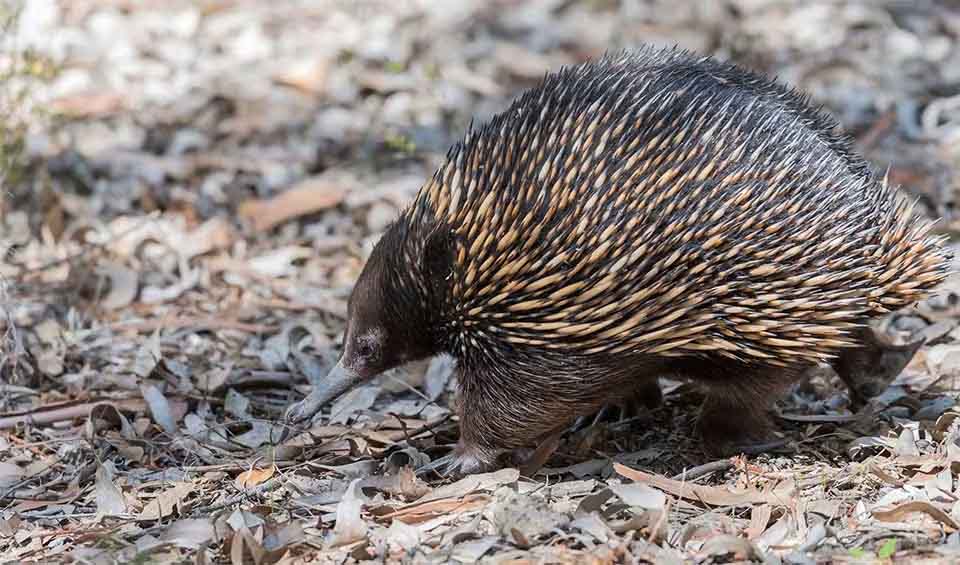Tachyglossidae – Echidnas
These walking sniffing balls of spines are even weirder than their cousins, the duckbilled platypuses
Echidnas are a prime example of nature’s ability to experiment and adapt over millions of years, resulting in a creature that defies easy categorization and shares characteristics with birds, reptiles, and mammals.
Echidnas are among the few mammals that lay eggs, a trait they share with their closest living relatives, the platypus, together forming the monotreme order. This egg-laying characteristic, along with a leathery beak reminiscent of a bird’s, places them among the most primitive living mammals, offering a glimpse into the early stages of mammalian evolution. Their reproductive process involves laying a single leathery egg directly into their pouch, which incubates until hatching.
Beyond their reproductive oddities, echidnas are also known for their distinctive spines. These spines, modified hairs made of keratin, cover their back, protecting from predators—a trait reminiscent of porcupines, though the two species are not closely related. Beneath their spiny armor, echidnas possess a pouch, similar to marsupials like kangaroos, where they carry and nurture their eggs and, subsequently, their young until they are old enough to survive outside the pouch.
Echidnas have long, slender snouts that act as both nose and mouth, through which they consume their diet of ants, termites, and other small invertebrates. The absence of teeth in echidnas is compensated for by the presence of a specialized, sticky tongue that can extend to capture their prey and ridges on the roof of their mouth and stomach that grind the food.
One of the most curious aspects of echidna biology is their reproductive anatomy, notably the male’s four-headed penis. However, only two of these heads are used during mating, with the others being inactive, alternating between ejaculations to maximize efficiency. Female echidnas, on the other hand, do not have nipples. Instead, they secrete milk through specialized glands in their pouch, which the young, known as puggles, lap up directly from the skin.
Genera in this family
One of the most ancient and unusual mammals on Earth
Have tiny muscle bundles connected to the bottom of each spine so that the spine’s movement and direction can be controlled



